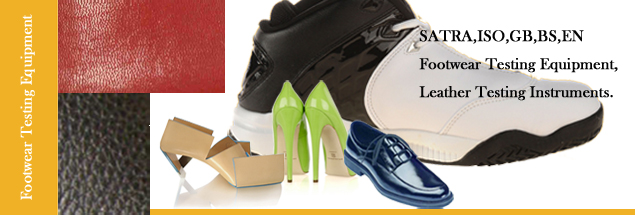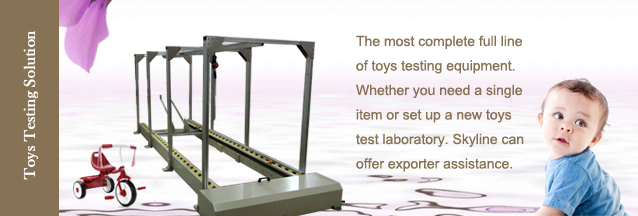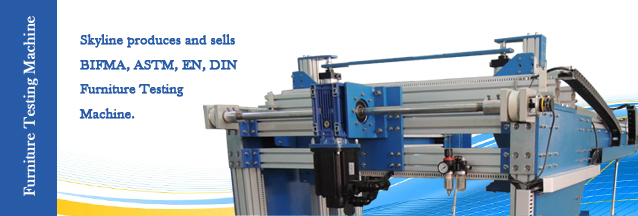 Toys Testing Equipment
Toys Testing Equipment Footwear Testing Equipment
Footwear Testing Equipment Tensile Testing Machine
Tensile Testing Machine Environmental Test Chamber
Environmental Test Chamber Building Material Flammability Test Equipment
Building Material Flammability Test Equipment Paper Testing Equipment
Paper Testing Equipment Spectacle Frames Testing Equipment
Spectacle Frames Testing Equipment Oil Analysis Testing Equipment
Oil Analysis Testing Equipment Lab Test Equipment
Lab Test Equipment Electronic Testing Equipment
Electronic Testing Equipment Stationery Testing Equipment
Stationery Testing Equipment Flammability Test Equipment
Flammability Test Equipment Furniture Testing Machine
Furniture Testing Machine Textile Testing Equipment
Textile Testing Equipment
 The Indian furniture inspection market welcomes new regulations!
The Indian furniture inspection market welcomes new regulations!- 2025/11/28
- The Indian furniture inspection market welcomes new regulations! The demand for these testing instruments will soar in 2026. New regulations in India are about to come into effect, and furniture insp...
 The cold current is coming. Can your products withstand the test of cold air?
The cold current is coming. Can your products withstand the test of cold air?- 2025/12/4
- Recently, the temperature has dropped sharply, and the cold wave has swept through. When we add clothes to keep warm, have we ever thought: whether the precision equipment and products that work i...
 Professional Combustion Testing Tool: ISO 5657 Building Materials Ignitability Flammability Tester
Professional Combustion Testing Tool: ISO 5657 Building Materials Ignitability Flammability Tester- 2025/11/6
- In the fields of building materials, rail transit, shipbuilding and other fields, the fire performance of materials is directly related to the safety of people's lives and property. As the key inde...
- More>
Ensuring Quality and Safety: Furniture Test Equipment as per EN 12521:2015
Ensuring Quality and Safety: Furniture Test Equipment as per EN 12521:2015
Furniture is an integral part of our daily lives, providing comfort, functionality, and aesthetics to our homes, offices, and public spaces. However, it's important to ensure that the furniture we use meets stringent quality and safety standards to protect consumers from potential hazards. One such standard is EN 12521:2015, which specifies the requirements for the strength, durability, and stability of non-domestic tables and seating. To comply with this standard, manufacturers rely on specialized furniture test equipment designed to evaluate the performance of furniture products.
EN 12521:2015 sets forth the testing requirements for non-domestic tables and seating, including tables, chairs, stools, and other seating furniture used in commercial, public, and institutional settings. The standard focuses on aspects such as stability, mechanical strength, and durability to ensure that furniture products are safe, reliable, and fit for purpose. Furniture test equipment plays a crucial role in meeting these requirements and ensuring compliance with the standard.
One key aspect of furniture testing is stability, as unstable furniture can pose a significant risk of accidents, especially in commercial and public spaces with high traffic. Furniture test equipment as per EN 12521:2015 typically includes devices to measure the stability of tables and chairs, such as tilting and overturning testers. These testers simulate real-life scenarios where furniture may be subjected to tilting or tipping forces, ensuring that the furniture remains stable and safe for use.
Mechanical strength is another important aspect of furniture testing, as furniture needs to withstand the rigors of everyday use without failing or breaking. Furniture test equipment may include devices to measure the strength and durability of furniture components, such as backrests, armrests, and legs. These tests evaluate the furniture's resistance to static and dynamic loads, impact, and fatigue, ensuring that it can withstand the stresses it may encounter during normal use.
Additionally, furniture test equipment as per EN 12521:2015 may include devices to evaluate the durability of furniture finishes, such as abrasion testers, scratch testers, and chemical resistance testers. These tests assess the resistance of furniture surfaces to wear and tear, staining, and other environmental factors, ensuring that the furniture maintains its appearance and functionality over time.
Furthermore, furniture test equipment may include devices to evaluate other aspects such as dimensions, ergonomics, and safety features of furniture products. For example, measuring tools may be used to verify the height, width, and depth of tables and chairs to ensure they meet the standard's requirements. Ergonomics assessments may involve testing the comfort and usability of furniture, including factors such as seat height, backrest angle, and armrest height. Safety features, such as anti-tipping devices or mechanisms to prevent finger entrapment, may also be tested using specialized equipment.
In conclusion, furniture test equipment plays a critical role in ensuring that furniture products comply with the requirements of EN 12521:2015, which focuses on strength, durability, stability, and safety of non-domestic tables and seating. Manufacturers rely on these specialized testing devices to evaluate the performance of their furniture products, ensuring that they are safe, reliable, and fit for purpose in commercial, public, and institutional environments. Compliance with this standard helps protect consumers from potential hazards associated with substandard furniture, and ensures that furniture in the market meets high quality and safety standards.
- ·2013 New Design Kinetic Energy Tester with printer
- ·New type Crockmeter- Manual Is Newly Released!
- ·Chinese New Year's Holiday!
- ·Skyline Instruments to SASO Installing and Training with a perfect Ending
- ·2014 New Design Toys 2m/s. Dynamic Strength Tester
- ·In 2014, the latest launched Caster and Chair Base Durability Tester

 Toys Testing Equipment
Toys Testing Equipment Footwear Testing Equipment
Footwear Testing Equipment Tensile Testing Machine
Tensile Testing Machine Environmental Test Chamber
Environmental Test Chamber Building Material Flammability Test Equipment
Building Material Flammability Test Equipment Paper Testing Equipment
Paper Testing Equipment Spectacle Frames Testing Equipment
Spectacle Frames Testing Equipment Oil Analysis Testing Equipment
Oil Analysis Testing Equipment Lab Test Equipment
Lab Test Equipment Electronic Testing Equipment
Electronic Testing Equipment Stationery Testing Equipment
Stationery Testing Equipment Flammability Test Equipment
Flammability Test Equipment Furniture Testing Machine
Furniture Testing Machine Textile Testing Equipment
Textile Testing Equipment

 English
English 中文
中文 Español
Español française
française العربية
العربية Русский
Русский







